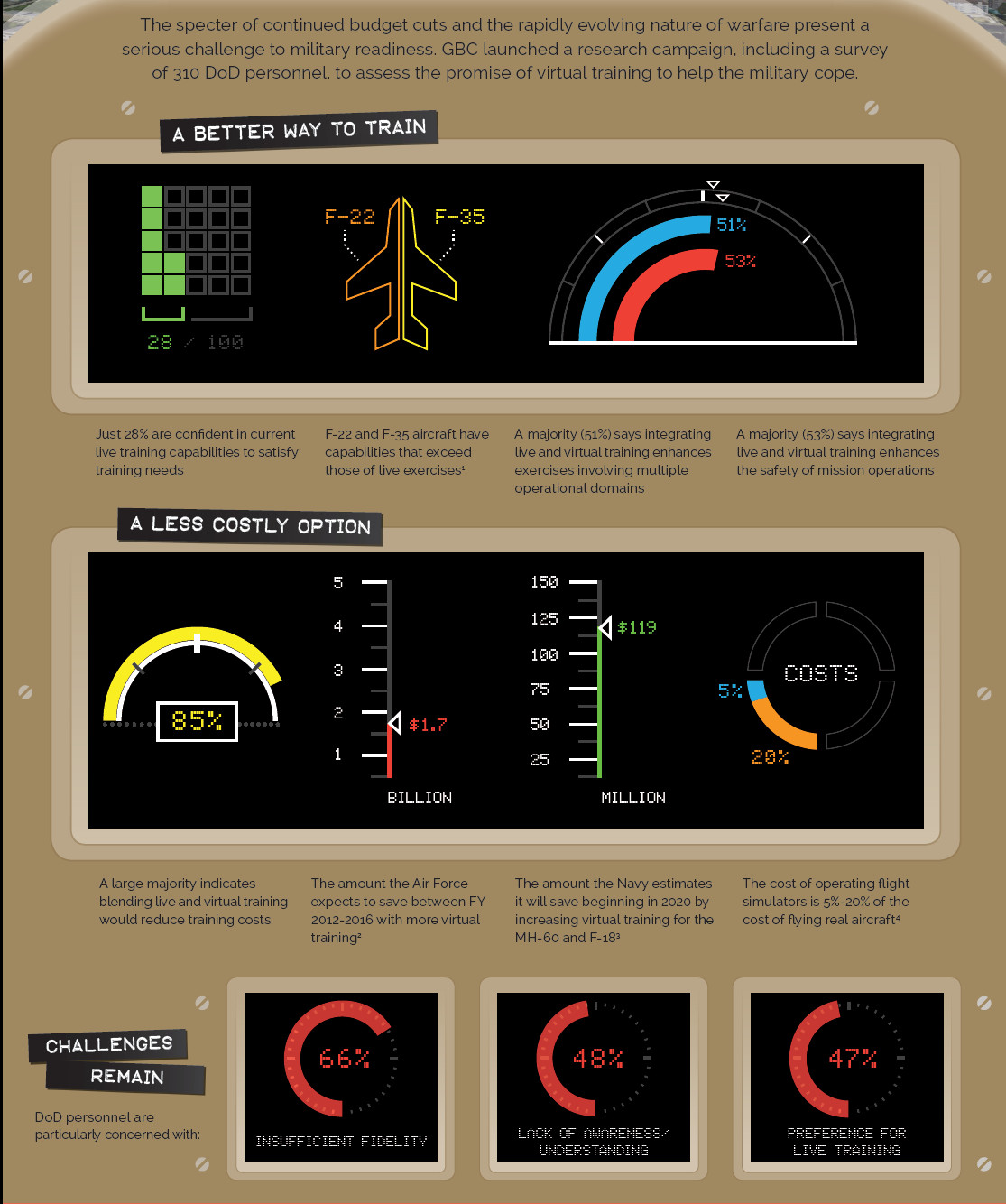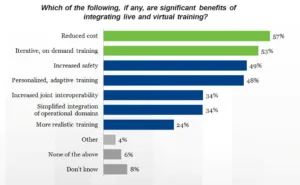Rockwell Collins hosted Insight Media and other press here in Sterling, Virginia where the company revealed the results of a new sponsored study and gave a demo of some of the latest technologies to support virtual training.
One of the key conclusions of the report: Military leaders are worried about their ability to be prepared for future engagements given the rapidly evolving nature of warfare, and with mandated sequestration cuts poised to slash budgets, virtual training must rise to the fore.
US President Obama is about to propose the reversal of these deep sequestration cuts, but will fund it by taxing the richest Americans – a plan that is not likely to fly with Republicans in control of both houses of Congress. As an aside, Rockwell Collins executives said that government meetings they had scheduled for the demo day had to be postponed because of the sequestration planning. This means there will be pressure on training budgets – and live training is very expensive.
How expensive? The cost to fly an F-16 Block 50 for training purposes is about $7500 per hour, but according to the research commissioned by Rockwell Collins, virtual training can be done at a cost of about $900 per hour. The cost differential is even higher for the F/A18 Hornet and P-3C aircraft. This will be very tempting for the military services and a potential boon for virtual training providers.
“Technology is at a place today where we can absolutely get the best realism within our simulators that allows us to do a lot more today than we were able to do in the past for virtual and constructive training”, noted Captain Craig Dorrans, NAVAIR PMA 205 in an interview for the report.
Saving money with virtual training is obviously a huge consideration. And, if this can be done while also increasing training effectiveness, service providers will flock to it. According to the comprehensive research conducted by Government Business Council (GBC), increasing levels of virtual training – the integration of virtual simulation into training regimens – can help the US military better prepare for new challenges while potentially reducing costs by more than $1.7 billion over five years. A big part of that is the elimination of fuel costs as the Air Force shifts from live to virtual training.
The report, “Going Virtual to Prepare for a New Era of Defense”, combines extensive secondary research, interviews with training and simulation experts, and a survey of 310 active-duty and civilian US Department of Defense (DoD) personnel to assess the promise of virtual training.
The top benefits of blending live and virtual training are reduced costs and iterative, on-demand training, as shown in the survey results below:
But the report’s finding of a general lack of confidence that current training will meet readiness needs is alarming. For example, just 23% of the survey’s respondents are confident current training levels will meet readiness needs. And, 28% of respondents are confident that current live training capabilities can satisfy training needs. This is one of the lowest preparedness levels seen in years, commented the report authors.
Former Air Force Lt. General Thomas Baptiste, now president and CEO of the National Center for Simulation, told GBC that “there is no way that any service chief can avoid the fact that they’re going to have to rethink the balance between live training and simulation”.
Virtual training will be absolutely necessary for advanced platforms like the F-22 and F-35. Some of the advanced features on these aircraft can only be safety trained in a simulation environment.
On a positive note, GBC’s research also reveals that the military is more prepared to increase virtual training than many realize. Survey respondents indicate they are comfortable increasing virtual training above current levels by 2 to 8 percentage points, and those in the higher ranks or with active-duty experience are comfortable with an even greater increase.
While there is wide-spread belief in the value of virtual training (85% of the respondents indicated that blending live and virtual training, as in the case of Live, Virtual and Constructive (LVC) training, would reduce costs for at least one of four types of training tasks), decision makers need better data on what tasks can benefit from virtual training and what are the quantifiable benefits and cost savings. These aspects still need more development.
To take virtual training to the next level, the report recommends developing a holistic taxonomy of training tasks, determining the precise return on investment for virtual training, optimizing virtual training for joint interoperability and investing in advanced simulation visual technology (see companion article on needed improvements Areas of Improvement for Virtual Training).
Key findings of the report are summarized in the graphic.

Overall, the report says that the military needs to review the way that it trains its personnel. This will include virtual training, but finding the right use of the technology is still an on-going effort. That was the motivation behind this report – to help move the discussion forward.
For the full report, please visit: www.govexec.com/gbc/going_virtual_for_new_defense_era/

